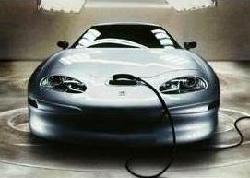Whose Problem of Evil?

Keywords: Richard Handler; problem of evil; theodicy; Sartre; Buddhists; morality; karma; Viktor Frankl; existentialism.
Richard Handler strikes back with a zinger of an e-mail, a neat riposte to my recent blog about him and the devil. The heart of his message runs like this:
“But Metta: If God is the whole shebang, that doesn’t much help with the ‘problem of evil.’ In fact, as I understand the argument, if we are “beyond good and evil” why should Buddhists privilege (let me use an academic term) compassion? Why not just kill or be killed? It’s God’s will. Like those nature docs on the Discovery channel….
“If the universe is what IS (as scientists like to tell us) the mind of god equals the laws of physics) then all morality is simply made up. Back to existentialism, post 1945. Jean Paul Sartre.
“But with all the oneness and acceptance, Buddhists carry their moral universe tucked in their robes. If in fact, as you say, ‘Everything that exists constitutes a great system in which no part – not even the tiniest or the most evil part – is surplus…” then the only thing we can do, is like those old Christians say, accept God’s will, because we sure don’t understand it.
“But why would this universe care for us? Why should it not be stunningly indifferent (as many scientists and secular humanists argue)?”
Excellent. Very nice, Richard. I agree with at least half of this. And I’m not the right person to defend Buddhism, since I am not one myself, though maybe my assumptions are closer to Buddhist than Christian.
However, when you say that this God-is-everything notion doesn’t help with the problem of evil. I disagree. It works for me. For one thing, it tells me not to be so certain that I can tell good from evil. It’s not that I am personally “beyond good and evil” but that what seems good or bad only does so within a certain frame of reference. Suppose you and I are game wardens watching over herds of wild animals. You’re on one side of the desert watching antelopes, while I’m on the other side watching lions. One day a lioness kills your favorite baby antelope. That’s evil, for sure. But I’ve been worried about my lion cubs, who are under-nourished. Today their mama drags home an antelope for their supper. I’m happy about it. What is evil to you is good for me because our loyalties differ.
Whose side is God on – the antelopes or the lions? I don’t know. But that’s not a Buddhist question anyhow, since they don’t have any god of that sort. However, it seems to me to solve the problem of evil pretty well. The problem of evil is a Judeo-Christian problem, isn’t it? It’s about theodicy – justifying God’s ways to man. If you’re really a good God, why did you let Auschwitz happen? You don’t have to go that far to find something bad to blame on God. You don’t have to be Job, either. Stubbing your toe will be a perfectly adequate evil experience to blame on God. For women, giving birth poses that question every time. Why did you set the universe up so we have to go through that, God?
My own imagined answer: So there would be lots of interesting problems for you to solve, my child. The universe is a terrific game – not a trivial, boring one, but one where you can really win or lose a lot. There’s huge suffering you can work on solving. You can lose big-time: you can die in agony – or you can hit the jackpot and experience bliss. I wouldn’t have God change a thing about this world, though I hope I can make some useful changes myself. If he fixed everything, I wouldn’t have anything exciting to do.
Is this a Buddhist idea? I haven’t heard them talk that way.
Does the universe care about me? Does it matter whether I try to do good? Well, the Buddhists have this thing about karma, which I don't believe. They don’t have a personal god who rewards or punishes you for doing good or evil. It’s supposed to be an impersonal, automatic machine that delivers the consequences of your own acts to you later on, so you always get what’s coming to you – good luck or bad. I’ve never believed in that because I don’t see how any “cosmic bookie” could calculate what is due to us. At a horse race, they pay you off when the race is over. But the race is never over for us. The consequences of our actions go on unfolding infinitely, to the end of time (except that Buddhist time never ends but goes in circles). The effect of every action of mine will have good consequences, then a bad consequence, then a good one, and so on, endlessly. At what point does the karma machine calculate your payoff?
But a Buddhist universe without either God or karma does sound to me as cold and impersonal as it sounds to you. It is not exactly a determinist universe, though. Your past deeds influenced the situation that you face right now, but they don’t determine the choices you make about your next act. So you’ve got some freedom there, if that makes you feel better.
It may not. It may make you feel worse because, if Buddhism leaves you free to choose your next action, it also leaves you without any guidance, should you want some advice. There’s no point in praying for suggestions about the right choices to make now. Nobody answers such prayers. There’s karma that pushed you, from behind, to the point where you’re standing now. But there’s nothing out in front of you beckoning you to come in any particular direction.
I think I’m actually more of a mystic than the average Buddhist. I DO believe I can get guidance. When I meditate, nothing much happens. Eventually I just get sleepy and go to bed, with no deep insights. However, if I meditate while asking for guidance about some problem I’m trying to solve, most of the time when I wake up, the answer comes to me. That’s not a Buddhist belief. It came to me from personal experience, though I understand that Quakers have a practice similar to that.
I’m also not sure whether I think existentialism is a good or bad thing. You obviously think it’s bad. I might also if I had not read Viktor Frankl at the time when his famous book was still bearing its original title, From Death Camp to Existentialism. Frankl (see photo) said there’s meaning for us in every situation. There’s a task for us – a unique responsibility that is ours alone, which life hands to us and demands that we take upon ourselves. He called that philosophy “existentialism” though it is opposed to Sartre, who said we make up our own morality. To Frankl, we don’t make it up, we can ignore it or take it up, but it’s assigned to us by life. (He could have said God but he said “life.”)
That’s not Buddhist either, but I believe in it. And when I’m trying to figure out what this next assignment is, I begin by trying to discern what IS. And it just IS true that I want to do good. That’s just a fact for me. I can’t speak for you, but I imagine it’s true for you too. I don't think you need to have a God who doles out rewards and punishments in order to want to do good.
Does the universe CARE for us? I think so. Assigning big tasks to a person is evidence of caring, isn’t it?













